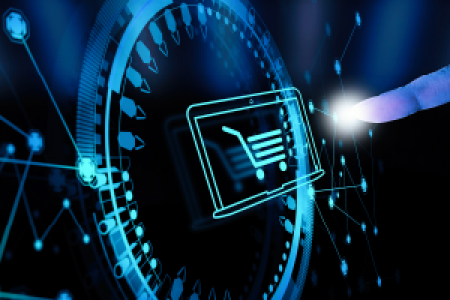November 10th, 2020
The term “procure-to-pay”, also called purchase-to-pay (P2P), refers to the procurement process of goods and services—from the initial agreement to begin a business relationship with a vendor all the way to invoicing and payment. You’ll hear it a lot when reading about B2B integration and e-commerce integration specifically, because optimizing this process is one of the top business priorities for most retail organizations with an online presence.
How Does Procure-to-Pay Pertain to E-Commerce Integration?
In as few words as possible, the procure-to-pay process consists of many individual processes, all of which take place across various parts of the organization and involve numerous employees. When you hear the term today in the context of e-commerce integration, it’s most often used to discuss end-to-end data exchange via systems connections, which translates to this: Procure-to-pay automation.
To clarify, your company uses multiple internal systems to carry out the procure-to-pay process. For example, in addition to your company’s primary system (which is most likely your ERP), you might use an e-commerce order management system as well as some sort of financial system for accounts payable. With a fully integrated e-commerce solution, the entire procure-to-pay process can be executed through your ERP, and the majority of the process is automated (think instant purchase order confirmations and purchase-order-to-invoice matching).
Steps Involved in the Procure-to-Pay Process
In the digital commerce world, an e-commerce retailer determines there’s a need for certain products on their website. The procure-to-pay process is just a shortened way of referencing all the steps necessary to engage in a business agreement with a vendor, purchase the desired products, and ultimately pay for those products.
Depending on the structure of a company and their specific business priorities, budget may need to be approved before a purchase order can be placed. Once it has been approved, the purchase order is entered into the e-commerce order management system and sent to the vendor, who then executes the order and ships the products required by the retailer. After confirming that the order has shipped, the vendor sends an invoice which contains the original purchase order number. Finally, when the invoice has been received by the e-commerce retailer, that invoice, along with the purchase order and receipt, are checked for accuracy. If all information contained within these documents lines up and is in accordance with the prices and conditions provided in advance, the invoice is paid.
Why E-Commerce Integration for Procure-to-Pay Automation Is a Top Business Priority
There are a number of common occurrences that have the potential to disrupt a smooth procure-to-pay process. This has encouraged the majority of e-commerce retailers to search for end-to-end integration solutions to exchange data between their various internal systems. Here are a few examples of disruptions that many e-commerce organizations have experienced:
Purchase Order Errors
An error on a purchase order, like an incorrect order quantity or missing zero, can have major consequences for the retailer. To elaborate, when an order has been entered into the e-commerce order management system incorrectly, there’s a high chance that the product will have to be listed as out-of-stock on the website. Consumers are demanding, and if you don’t have what they’re looking for exactly when they’re looking for it, they’ll find someone who does.
Invoice Errors
Invoice errors can be tough—even the slightest mistake may take weeks, or even months, to resolve. This is especially true if the discrepancy was not immediately flagged and the accounts payable team has already submitted the payment.
Maverick Buying, or Purchasing Outside of Vendor Contracts
Imagine this: You have a contract with an office supplies wholesaler but your buyers neglect this contract and purchase the same suppliers from a different wholesaler. Even though this is not intentional in many cases, it can lead to financial complications and tricky legal situations.
Procure-to-Pay the Right Way
All of the above complications and more can arise when stand-alone systems are used over an integrated approach in an e-commerce environment. Luckily, it can all be avoided by enabling data exchange across systems, like integrating your e-commerce order management system and your ERP and ensuring that all your vendors are sending their invoices electronically.
By implementing an e-commerce integration system capable of handling this task, you can achieve a fully automated procure-to-pay process. That’s because all business data flows through the same system, resulting in quick and accurate invoice processing; this includes directing the invoice to the right person for approval, as well as cross-checking purchase order and invoice data. As mentioned before, if everything lines up, preconfigured automation rules enable payment automation. And if there’s a discrepancy in the data and a human needs to step in, the correct person will be notified instantly.
Gain a Competitive E-Commerce Advantage
By making it one of your top business priorities to integrate your e-commerce platform with other internal systems and automate the procure-to-pay process as a result, you gain full supply chain transparency for better inventory tracking and forecasting, control over the invoicing process with your vendors, and most importantly, a competitive advantage in the digital commerce space.
Automating your procure-to-pay process dramatically simplifies a complex chain of operations. By taking the total integrated e-commerce approach (hey, did you know that’s what the “TIE” stands for in TIE Kinetix?) and making it one of your top business priorities, you can set the pace for optimizing the day-to-day operations that truly impact your e-commerce business.





